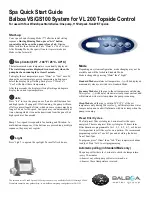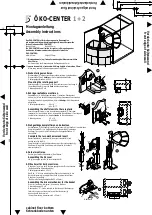
KidGoo1 – Q8000-S
Subject to change. – 05|2016 –
29
Utilisation
Placing the child
f
Let the child get in, or lift it into the cabin.
f
If necessary, adjust the head rest by securing it to the seat at a different height with the Velcro
strips.
Fastening in a child
f
Help the child to put his/her arms through the two side parts of the 5-point safety harness.
f
Adjust the safety harness, the harnesses pads and the head rests to the size of the child.
f
Pull the side harnesses to the middle and connect the two parts of the tongue.
f
Push the tongue into the harness catch until it engages audibly.
f
Check that all parts of the 5-point safety harness fit properly and comfortably.
f
Close the cover and the associated toggle and Velcro fasteners.
Danger!
Before every journey, check that the safety harness and harness catch is sitting
correctly. Failure of the restraining function can result in serious or even fatal injuries
in the event of an accident. Do not set off until the child is wearing a bicycle helmet
and is properly fastened in.
Checking the weight distribution and tow bar load
An optimum weight distribution is important for safe handling: The load’s centre of gravity should
always lie in the centre of the wheel axle. The tow bar load with which the tow bar lies on the
coupler must be neither too great or too low in Trailer mode:
Tow bar load too great (> 8 kg): Too much load on the coupler.
Tow bar load too low (< 3 kg): The trailer could reduce the traction of the rear wheel through
lifting and thereby cause critical situations in curves.
Centre of gravity too far out: Loading on one side makes tipping over while cornering more
likely.
Danger!
Distribute the load evenly across the width of the
KidGoo1
.
Check the tow bar load before every journey with a trailer. Tow bar loads outside the
permitted range of 3 – 8 kg cause critical handling performance.
















































